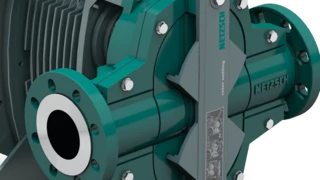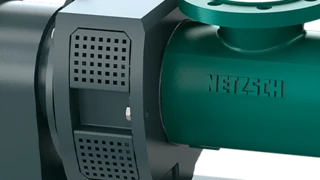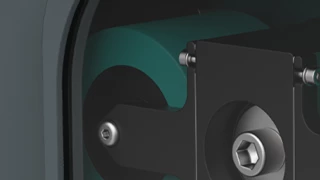NETZSCHicon
Cavitation
Cavitation is a physical phenomenon where vapour bubbles form and dissolve in liquids. This often occurs when solid objects, for example, the impellers of centrifugal pumps, rush in a drink. As soon as the static pressure drops below the evaporation pressure of the medium during pumping, vapour bubbles form and are drawn along with the flowing fluid.
When the pressure rises again, the vapour condenses in the bubbles, causing sudden stress and temperature peaks. This phenomenon can cause mechanical damage to pumps and other components, as the surface is attacked due to the heavy load, and parts can break off. It also leads to reduced efficiency of the pump. There are various strategies to prevent cavitation, such as limiting the temperature of the pumped medium or maintaining sufficient suction pressure in the pump. More advanced approaches include monitoring the differential pressure or the noise generated by the pump.





